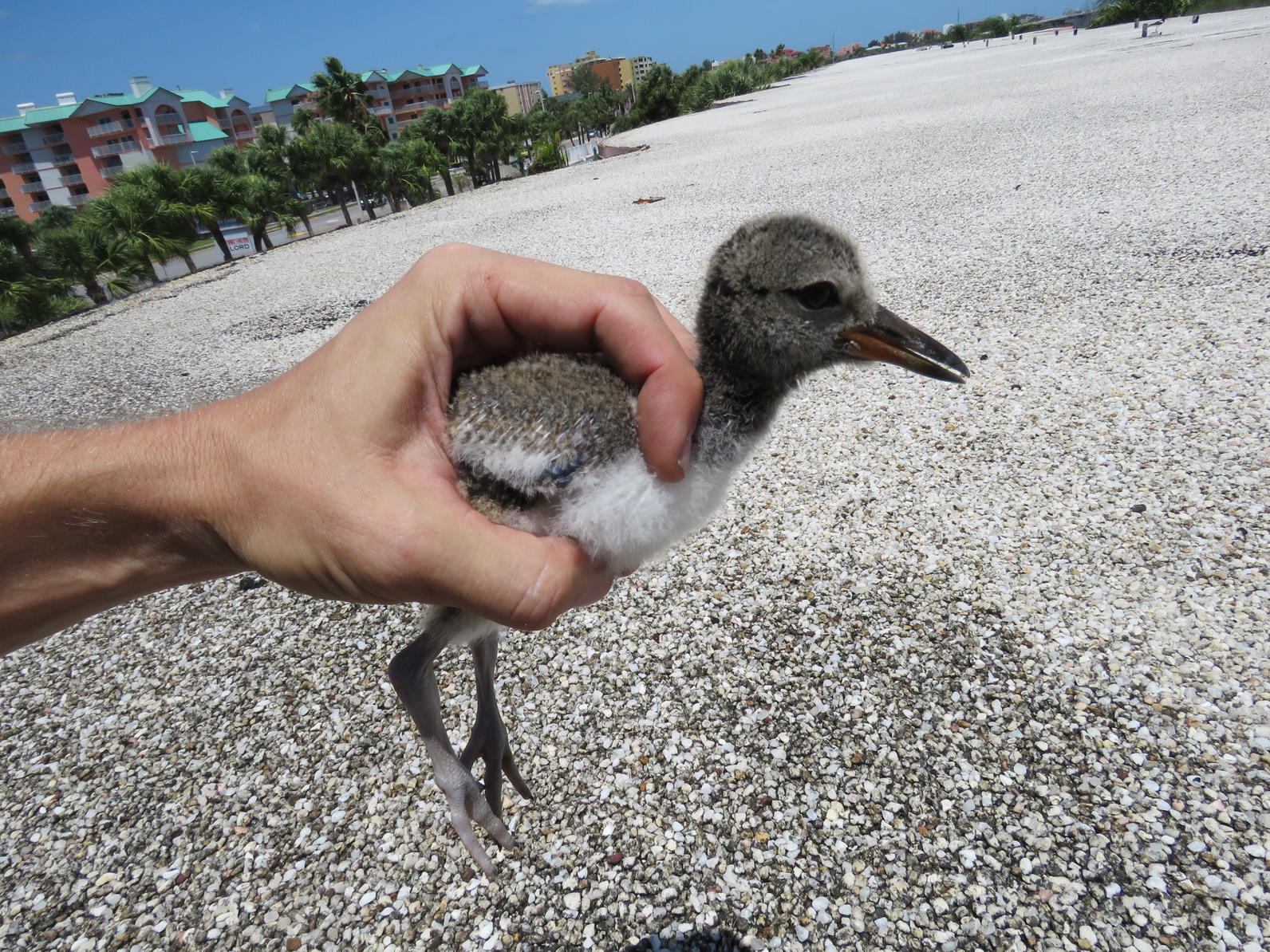It was a hot and steamy day atop a rooftop seabird colony in Pinellas County. Least Tern, Black Skimmer, and American Oystercatcher chicks sought refuge from the sun’s glare beneath their parents or in the fragments of shade they could find on the gravel roof. While this unorthodox habitat may seem like a strange place for successful bird nesting, terns, oystercatchers, and skimmers have flocked to rooftops to raise chicks away from ground predators and human disturbance. To shorebirds and seabirds, a gravel rooftop looks like a beach of white pebbles.
But nesting on rooftops brings unique challenges to the birds. On this particular morning, an American Oystercatcher chick strayed too close to the roof’s edge… and fell off.
“I saw the adults acting strangely,” Wendy Meehan, a local Audubon member said, “On the ground, in the parking lot, lots of distressed vocalizing.”
The adults tried to follow their nearly-fledged chick as it roamed the parking area and even crossed a nearby street. Luckily, Meehan called Jeff Liechty, Audubon Florida’s Suncoast Rooftop Nesting Coordinator.

After giving the chick a once-over, Liechty returned the oystercatcher to the rooftop colony. “The parents came to greet it immediately,” he reported, “and were feeding it shortly thereafter.”
“Oystercatchers are very attentive parents,” he continued, “They stayed near the chick on the ground, and would fly up onto the roof edge, calling, but the chick wasn’t quite flight-capable, so it couldn’t follow them.”
Protecting rooftop nests and individual chicks is critical for this species, which is listed as State-designated Threatened in Florida.
“We need to protect their traditional habitat foremost,” says Marianne Korosy, Ph.D., Director of Bird Conservation for Audubon Florida. “They nest on open, sandy beaches and on the flats of marshy islands, habitat that is very popular for beach-goers, boaters, and development as well.”
She continues, “Unfortunately, as old buildings are being replaced, gravel rooftops are becoming less common. It is even more important that people visiting Florida beaches give nesting sea and shorebirds their space, while we work to conserve remaining coastline nesting habitat.”
Audubon Florida typically runs a volunteer program to monitor both beach and rooftop nesting colonies. However, during the COVID-19 pandemic the program is temporarily suspended but may resume on a limited basis by mid-summer.






